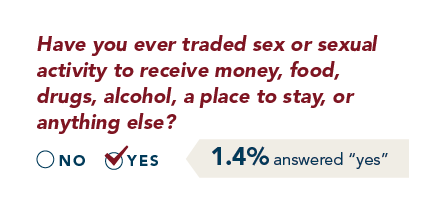
Data from the 2019 Minnesota Student Survey
This is the first population-based prevalence estimate of high school students who report trading sex for something of value (including trafficking of minors for sexual exploitation). Trading sex presents many harms to young people. In 2019, the Minnesota Student Survey – a tri-annual census of young people in Minnesota’s schools – included a new question for 9th and 11th graders:

This is likely an underestimate because the MSS is completed by students enrolled in school. It does not include youth who were not in school on the day of the survey or who do not attend school. Young people may also be reluctant to answer “yes” for many reasons, including shame or fear.
1 This estimate of 5,000 young people is based on the 2018 Census number of 15-19 year-olds in the State of Minnesota. We used this formula 1.4% of 357,809 = 5009.
Minnesota's response: Safe Harbor
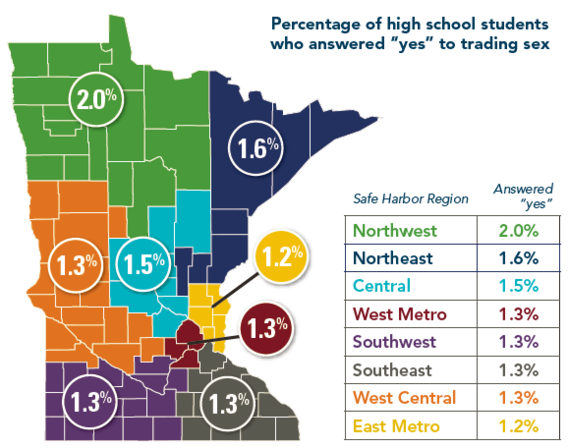
Youth who trade sex are considered sexually exploited under Minnesota’s Safe Harbor law. Sexual exploitation is a public health issue that harms individuals, communities, and populations across the state. The Minnesota Department of Health Safe Harbor program receives state and federal funds to support a comprehensive response through regional navigators, services providers, and tribal governments. In addition to services, training, and protocol development, the Safe Harbor system supports specialized housing, outreach, and investigations through partnership with public health, human services, and public safety.
The map shown here reflects the Safe Harbor eight regional navigator areas as of January 2020.
Who is most impacted by trading sex and sexual exploitation?
Gender Identity2
Students of all gender identities reported trading sex. For example, among transgender students, 5.9% reported trading sex.
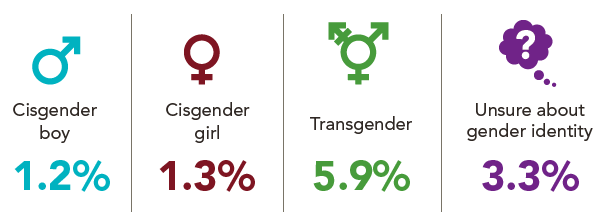
2 Transgender is a term that describes individuals whose gender identity differs from social or cultural expectations of their birth-assigned sex. Cisgender is a term for those whose gender identity aligns with their birth-assigned sex.
Race and Ethnicity
Students from many different backgrounds reported trading sex.
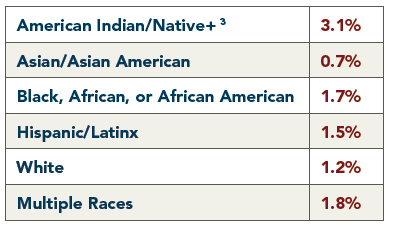
3 This category includes all students identifying as American Indian or Alaskan Native (AIAN) only or AIAN plus other races/ethnicities or Native Hawaiian or Other Pacific Islander (NHPI) or NHPI plus other races/ethnicities.
Relevant experiences & contexts
Some groups of young people are more likely to be impacted by trading sex and sexual exploitation. Below is the percentage of youth in some of these groups who reported that they have traded sex. For example, among youth in juvenile correctional facilities who completed the MSS, 12% reported trading sex.
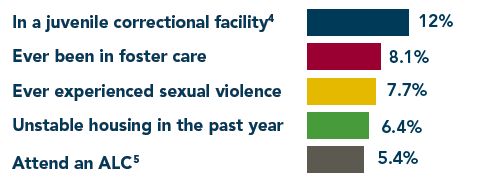
4 This estimate is derived from a separate sample of youth in juvenile correctional facilities.
5 ALC includes alternative schools and area learning centers. This estimate is derived from a separate sample of students attending ALCs.
Plans for after school
Like all young people, those impacted by trading sex have hopes and dreams for their future. The MSS asks students what they plan to do after they graduate from high school. Among those who said “yes” to trading sex, here is what they want to do after graduation:
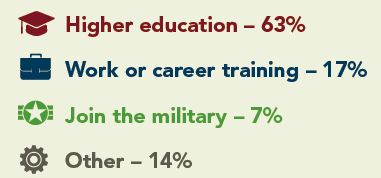
About the Research
The Minnesota Student Survey is coordinated by the Departments of Education, Health, Human Services, and Public Safety. In 2019, 81% of public school districts participated. Throughout the state, 66% of 9th and 54% of 11th graders completed the MSS. Passive parental consent was used, following federal laws. The primary MSS sample used here is comprised of 71,007 students who answered the question about sex trading. Smaller samples of students in alternative schools, ALCs, and juvenile correctional facilities are also available.
Download PDF of research findings
Press release (PDF)
University of Minnesota research team
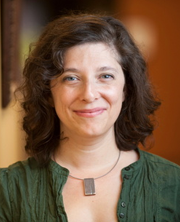
Lauren Martin, PhD
Associate Professor
School of Nursing
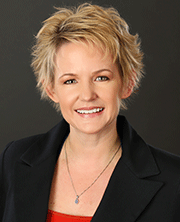
Barbara J. McMorris, PhD
Associate professor
School of Nursing
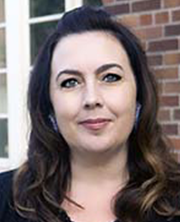
Katie Johnston-Goodstar
Associate professor
School of Social Work

Nic Rider, Ph.D.
Assistant professor
Medical School
